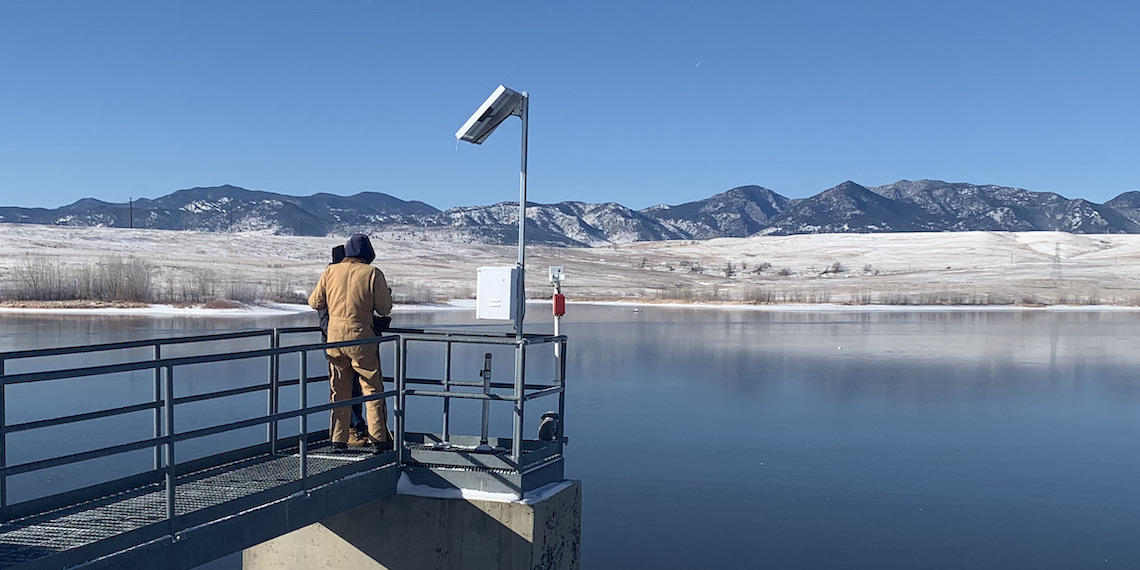Tech partnership bolsters data and analytics for water-risk mitigation

The financial impact of water-related events is set to rise as the climate continues to change, but one leading professional services company has made an early-stage investment in an innovative new data and analytics company to help communities curb economic risks.
GHD’s ventures arm has made a US$2 million investment in Divirod, a US-based data and analytics company that deploys a new real-time water sensor using satellite technology.
The sensors are self-sustaining via solar battery power and can be placed in remote and environmentally sensitive locations to accurately identify water, snow, soil moisture continuously and in near real-time.
The platform is set to provide companies, councils, utilities and communities with a new high density data set at their chosen locations, and analytical tools that help to support informed decisions that conserve water resources, protect properties, support healthy ecosystems and save lives.
Released in 2022, GHD’s global Aquanomics report assessed the economic risks associated with floods, storms and droughts, and found that water risk could wipe $5.6 trillion from global GDP by 2050.
GHD Global Leader of Future of Water, Rod Naylor, said the partnership between GHD and Divirod will aim to mitigate the loss and damage caused by water risk across sectors and increase the resiliency of vulnerable communities.
“Working closely with Divirod will help GHD assist clients to accelerate their work to provide water management systems to better predict and respond to incidents from flooding and drought,” Naylor said.
“It will also help reduce loss and damage and the wider social and economic impacts of climate change.”
Building upon Divirod’s comprehensive data platform, customers are able to tailor their needs across a broad range of applications, including reservoir and watershed management, early flood warnings, Insurtech and smart irrigation, Divirod CEO Javier Marti said.
“By creating a data platform, we enable our customers to tackle water risks with trustworthy and high-quality data. Having the support from GHD will contribute to the growth of Divirod in areas of common interests,” he said.
Partnering up
With one of GHD’s key ambitions being to make water management more sustainable for generations to come, Naylor said the company is always looking to invest in transformative technologies that relate to this work in delivering the company’s core mission and purpose.
“We look to invest in early to mid-stage technologies that we think will be truly transformational. This is an equity investment – we are not acquiring the technology just for GHD. We are participating with an independent organisation, bringing our expertise and access to knowledge and customer base to help them accelerate their impact,” he said.
“Divirod aligns really strongly with climate response resilience and the ways to deal with the issues that we raised in Aquanomics.
“Our strategic ambition is to find more ways to use this data to manage water better, to inform better decisions, to help communities to be aware. That is where we think Divirod fits really strongly.”
Aside from aligning with GHD’s key aims and objectives, Naylor said the equity investment is also about supporting the development and growth of a highly promising company.
“We will also be working with them to accelerate their development and evolution, and their growth and their impact. We will look for opportunities to work with them and integrate them into our work, but we don’t want to make that exclusive,” he said.
“We want the company to expand and enable them to make a huge difference.”
Data density
One of the key strengths of Divirod’s technology is its ability to be placed just about anywhere, Naylor said, including particularly remote and environmentally sensitive locations.
“Fundamentally, this technology is deployable pretty much anywhere on the planet. The device is self-sustaining, in terms of its solar battery power, and highly mobile. It can very easily be placed in world heritage areas, as you don’t have to put concrete down or have to have power access,” he said.
“The ambition is to have a lot of these sensors producing a lot of data. The sensor uses the radar information that satellites send to earth for GPS locations. But, through some very clever analytics, it reflects and interprets those signals to identify water, snow, soil moisture, at a location and at a height, to within a couple of millimeters.
“And all this information is delivered very close to real time.”
Naylor said the devices can be used to measure water levels during storm surge, or unusual tide events or floods, and the technology has the ability to create very rich historical data sets that are more widely dispersed, and at a much lower cost than existing sensor technologies.
“We think this has the power to transform how cities, water service providers, councils and governments measure and respond to climate events,” he said.
“We think this evolving technology could create a lot of real-time information that can be used to create alerts and to inform actions. This high-density information can feed back into automated flood modelling, as well, to update and improve historical modelling and future planning.”
Building resilience
While collecting real-time, high-density information would be a boon for flood modelling and catchment management applications, Naylor said there’s also a lot of potential for the technology to transform insurance arrangements to benefit impacted communities.
“Parametric insurance is about setting a flood level for payment, rather than relying on individual assessments and processing, which can take months,” he said.
“For an insurer, setting a flood level for payment is a risk. But if there is a reliable data set about water levels at a street-by-street level, it can empower parametric insurance. The community benefit is to have the funds they need in their accounts within 24 hours.”
Naylor said improving insurance arrangements will directly impact how quickly a community is able to respond and recover: “Robust and proactive insurance mechanisms empower the community to do what needs to be done without having to wait for payment and support”.
“These are the sorts of applications where we think this technology can add value. If these applications and uses become broadly adopted, then our society will become more climate resilient and able to recover more quickly,” he said.
Naylor said that while Divirod will continuously develop and evolve its technology, its data platform already has the potential to integrate and make available a wide range of other related information and insight, too.
“It could help with immediate alerts for flooding, but also be useful for long-term climate trends and measured climate impacts to provide reports and information back to governments,” he said.
“For us, Divirod’s work fits really neatly into our ambition to be supporting and enabling our clients, cities, towns and water authorities, and helping them do things better in the face of climate change.”



